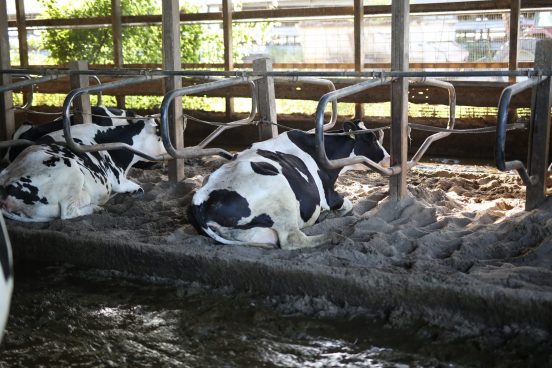Dairy’s Most Profit-Draining Challenges — Hemorrhagic Bowel Syndrome
Dairy health experts demystify a syndrome that can impact highly productive cows with little warning.

From heat stress to mastitis, dairy producers have a number of common, profit-draining challenges to worry about daily. So, given its low incidence rate, they may not spend a lot of time thinking about hemorrhagic bowel syndrome (HBS)—until it hits their dairy operations. Once a cow shows signs of HBS, it’s typically too late to save the cow. In fact, nearly 80% of cows that contract HBS die from it.1
To provide producers with information on this deadly disease, two dairy research experts with Phibro Animal Health Corporation, Dr. Jim Chapman and Dr. Scott Bascom, led a webinar titled, “Dairy’s Most Profit-Draining Challenges — Hemorrhagic Bowel Syndrome.” The free webinar is available for download on Phibro Academy.
Five Things You Might Not Have Known about HBS
- Your most productive cows are prone to HBS. This syndrome hits without warning and often impacts highly productive dairy cows in the early part of lactation. “It’s not unusual for a cow affected by HBS to make well over 100 pounds of milk one day, then the next day not produce any milk at all,” says Dr. Bascom. “HBS is associated with sudden death for good reason. Producers may observe a healthy cow one day, then find it dead in the barn the next.”
- Scientists have made great strides in understanding HBS. For years, researchers suspected that Clostridium perfringens type A was the causative agent of HBS. “Type A strains are normal inhabitants of the GI tract and are prevalent in the environment. It is true that toxins caused by type A strains can create irritation of the GI lining (enteritis) with bleeding into the lumen of the small intestine creating symptoms similar to those observed in cases of HBS,” states Dr. Chapman. “However, most researchers now believe that Aspergillus fumigatus (AF), a pathogenic, invasive mold, is more likely the root cause of HBS.”
- The more stressed a cow is, the more susceptible she is to HBS. Like most molds, AF is found in the environment and produces toxins that inhibit immune function. A healthy, low-stressed cow is more likely to withstand the presence of AF without issue; however, stress and immunosuppression are primary predisposing factors in AF infection. HBS is often initiated by a stressful event or by stress in combination with ingestion of the mold. While unavoidable, calving is a significant stressor that possibly serves to explain why high-producing, early-lactation cows are often the ones affected by HBS.
- HBS is caused by mycosis, which is not the same as mycotoxicosis. Those who work with ruminants are all too familiar with the problems that mycotoxins can cause. Mycotoxins are produced by mold that grows in grain or forage ingredients and is consumed by the animal. As the mold grows, it produces toxic compounds that cause mycotoxicosis. By contrast, mycosis is a fungal infection where the fungus grows on or in tissue.
- There are actions producers can take to reduce the likelihood of HBS affecting their herds. Moldy feed and immunosuppression are the two biggest contributing factors of HBS. Fortunately, producers have some control over both. “Like most molds, AF grows when exposed to air and is most prevalent in corn silage — particularly if it’s put up poorly,” cautions Dr. Bascom. And while it’s impossible to eliminate all stressors, producers can boost their herd’s immune system through nutritional specialty products like OmniGen® that provides immune support in cows which helps them to respond better to the mold once it takes residence in their bloodstreams.”
Registration for the “Dairy’s Most Profit-Draining Challenges — Hemorrhagic Bowel Syndrome” webinar is free on the Phibro Academy website at: https://academy.pahc.com/catalog/info/id:447. For more information on OmniGen, contact your local Phibro representative or visit www.theOmniGenDifference.com.
References:
1USDA, 2014. Dairy 2014 Health and Management Practices on U.S. Dairy Operations. NAHMS-2014.
OG110622GLB-R0122 ©2022 Phibro Animal Health Corporation. Phibro, Phibro logo design, Healthy Animals, Healthy Food, Healthy World, and OmniGen are trademarks owned by or licensed to Phibro Animal Health Corporation or its affiliates.
Dairy Cattle Products
Learn how your ration can help support improved udder health.











 OmniGen Green is Organic Material Review Institute (OMRI) listed.
OmniGen Green is Organic Material Review Institute (OMRI) listed.